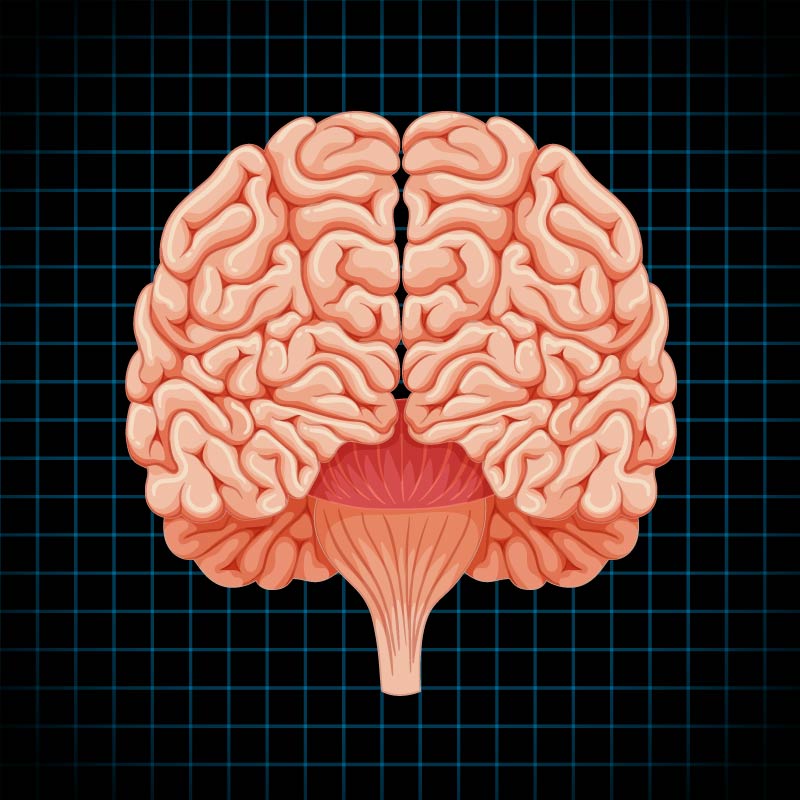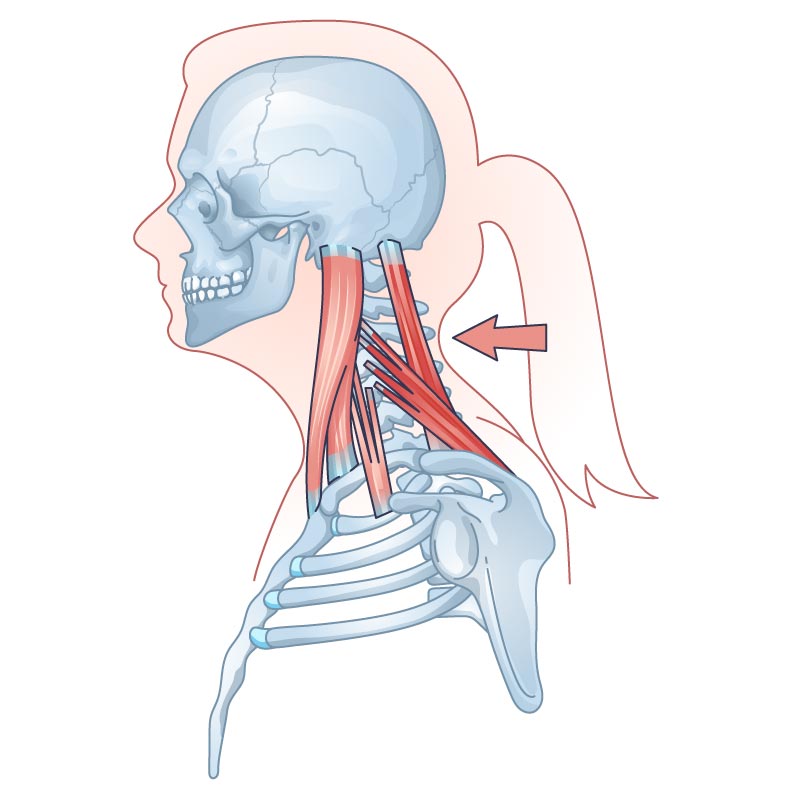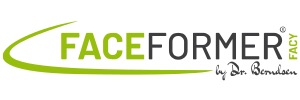Swallowing – more than just a reflex
Mechanics and meaning of an ordinary movement
Mechanics and meaning of an ordinary movement
We swallow thousands of times a day, usually without thinking about it. Yet this seemingly simple act is an amazingly complex process involving 52 muscles and numerous reflexes. Swallowing is not just about transporting food into the stomach, but a complex coordination of muscle actions, brain processes and even our posture. From the first bite prepared in the oral cavity to the final passage into the stomach, there are a number of critical steps that ensure we do not choke or suffer other complications. This article highlights the importance, biomechanics and disorders of the swallowing process, providing a comprehensive overview of this process that is as commonplace as it is vital.
Swallowing, for many a seemingly simple and everyday action, is actually a fascinatingly complex process. It is far more than just transporting substances from the mouth to the stomach. Every day, often unconsciously, we perform the act of swallowing thousands of times, be it when eating, drinking or simply swallowing saliva. But what exactly happens in our body during this process?

Incredibly, 52 muscles are involved in this seemingly simple process. This amazing variety of muscles must work in perfect harmony and coordination to transport food and liquids safely to their destination in the stomach. These muscles are not only responsible for swallowing. Some are essential for the statics and balance of the head. They have a major influence on our posture and the entire musculoskeletal system.

The conductor of this complex orchestra of muscles is our brain, or more precisely the brain stem. As we swallow, information constantly flows back and forth between the muscles and the brain stem, with the latter monitoring the process and intervening to regulate it if necessary. Despite the automatic nature of the swallowing process, which has been shaped by evolution, various factors can influence and modify the process.
But what happens when this carefully choreographed ballet gets out of sync? Incorrect swallowing patterns, which have often existed since childhood and go unnoticed, can have profound effects on the body. Surprisingly, many of the resulting health problems are often not directly associated with swallowing. In the depths of this seemingly simple process, it becomes clear how important it is to understand the mechanics and dynamics of swallowing. It is not just a reflex, but a marvel of human physiology.
The swallowing pattern is the repeated sequence of movements and muscle contractions that a person regularly performs when swallowing food or liquids. It includes the movements of the tongue and other muscles in the mouth during swallowing. Swallowing patterns can also be incorrect and cause problems, such as when the tongue pushes against or between the teeth when swallowing, which can lead to problems such as misaligned teeth and other disorders. An incorrect swallowing pattern can be corrected with targeted exercises and therapy.
The swallowing process can be divided into three main phases: the oral, pharyngeal and esophageal phases. Each phase plays a crucial role in ensuring that food and liquid pass safely into the stomach. It is amazing how many reflexes and coordinated movements are involved in this seemingly simple process. Each step must be performed precisely to ensure that the food reaches the stomach without interfering with breathing or causing other problems.
The process begins in the oral cavity. Here, the food is moistened by chewing and by saliva to form a swallowable morsel. This is called a bolus. The tongue presses the bolus against the palate, initiating transport into the throat.
Once the bolus has reached the throat, the pharyngeal phase begins. This is a critical moment in the swallowing process. Here, the larynx is raised to prevent food from entering the trachea. At the same time, the nasopharynx closes so that nothing can enter the nasal cavity.
The final stage of the swallowing act is the esophageal phase. Here, the bolus is transported into the stomach by the oesophageal muscles. This is done by coordinated muscle contractions that push the bolus along the oesophagus into the stomach.
Real-time MRI – Drinking pineapple juice
(Author: Biomedical NMR Research GmbH)
Ideally, “correct” swallowing ensures that food and liquid pass safely from the oral cavity to the stomach without affecting the airway. A correct swallowing process uses all three main phases while protecting the body from potential hazards.
Although swallowing is an unconscious and automatic action for many, abnormalities and disorders can occur. The “wrong” swallowing can be caused by various factors, such as anatomical abnormalities, neurological problems or bad habits.
In order to take corrective action when needed, it is important to understand the mechanics of swallowing. An improper swallowing process can cause serious health problems such as choking or aspiration pneumonia. If swallowing problems persist, it is important to consult a specialist.
There are a number of typical signs that indicate “wrong” swallowing and problems in the swallowing process if they occur more frequently.
…during or after eating or drinking indicates incorrect swallowing habits.
…and changes in the voice can be signs.
…can be caused by problems with swallowing.
…from food or liquid that gets stuck is an indication.
…such as changes in eating speed or avoidance of certain foods, indicate swallowing problems.
The position and statics of our head significantly influence the swallowing process. The head and especially the jaw have specific anatomical positions that are necessary for efficient swallowing.
For example, a neutral head position allows the jaw to move freely, which is important for the beginning of the swallowing process. In addition, the position of the head changes the pressure in the pharynx (throat), which in turn influences the transport of food. A forward tilted head position can increase the pressure in the pharynx, making swallowing more difficult. Therefore, correct head posture is crucial to avoid swallowing problems and to transport food safely into the stomach.
Poor posture, such as a constant forward tilt of the head or a hunched back, can impair the swallowing process. This can lead to unwanted swallowing, reflux and other swallowing disorders.


Poor posture also affects the swallowing process.
Numerous muscles are involved in the swallowing mechanism and in adjusting the head position. Some of them are shown here.
The muscles and structures involved in swallowing depend on proper alignment and posture to function optimally. This ensures that food passes efficiently from the mouth to the stomach and protects the airway.
Correcting posture can not only help prevent back and neck pain, but also improve the swallowing process. Physiotherapists and occupational therapists can provide guidance to improve posture, which in turn can have a positive effect on swallowing.
Swallowing is not just a mechanical function; it is controlled by a sophisticated sensory monitoring system. These sensors, located in the mouth, throat and deeper in the oesophagus, collect a variety of information. For example, they register the temperature, texture and consistency of the food to ensure that the swallowing process is safe and efficient.
Swallowing is a complex process that requires a variety of sensory information. The sense of touch plays a central role in this process. The receptors involved send signals to the brain, which then triggers the optimal swallowing reflex. Recently, new types of stretch sensors have been discovered in the oesophagus. These sensors play a significant role in monitoring the passage of food through the oesophagus. They help the body know when and how much the muscles of the oesophagus need to contract to effectively move food into the stomach. Their discovery has increased our understanding of the complexity and sophistication of the swallowing process.
The brain has the main task of interpreting and processing the information collected by the sensors. It plays a crucial role in learning and storing swallowing patterns. From infancy, our brain adapts to different food shapes and textures, learning different swallowing patterns and being able to recall them throughout our lives. This enables us to swallow both liquid and solid foods safely and efficiently. The central nervous system, especially the brain and spinal cord, controls the swallowing process. Special brain regions, such as the brain stem, coordinate the different phases of swallowing. Damage to these areas can lead to swallowing disorders. In addition, numerous nerves, such as the trigeminal nerve or the glossopharyngeal nerve, are involved in the control and perception of the swallowing process.
Swallowing is an adaptive process. This means that the body can adapt to different circumstances, for example to different consistencies of food. The feedback system, consisting of sensory inputs and motor responses, enables the body to constantly optimise the swallowing process and adapt it to the current conditions.
Swallowing may seem like a simple and everyday action, but there are a number of problems and diseases that can affect this process. Some of these conditions may be temporary, while others are chronic in nature.
A common problem that refers to the reflux of stomach acid into the oesophagus. This can cause a burning feeling behind the breastbone or in the oesophagus, often extending into the throat. It can be caused by a malfunction of the sphincter between the stomach and the oesophagus.
A condition in which swallowing is difficult or even painful. Swallowing difficulties may include coughing and choking, retching, hoarseness, belching or reflux. The problems can be due to a variety of causes, including neurological disorders, narrowing of the oesophagus or muscle weakness.
This occurs when food, fluid or vomit enters the trachea and lungs. Persistent coughing, difficulty breathing, chest pain and infection with accompanying symptoms such as fever and chills may accompany it.
Eine Infektion der Mandeln kann das Schlucken schmerzhaft machen, besonders bei Kindern. Folge der Entzündung sind meist eine Schwellung der Mandeln, Halsschmerzen und Schluckbeschwerden, Heiserkeit, Husten und andere erkältungsähnliche Symptome.
Andauernde Schluckbeschwerden können zu Appetitlosigkeit führen und mit daraus folgendem Gewichtsverlust einhergehen. Suchen Sie einen Arzt auf, wenn die Beschwerden über einen längeren Zeitraum anhalten. Das Erkennen und rechtzeitige Behandeln von Schluckproblemen ist essenziell, da sie nicht nur die Lebensqualität beeinträchtigen, sondern auch zu ernsteren gesundheitlichen Komplikationen führen können.
Swallowing and breathing are two processes that take place constantly and mostly unnoticed in the background in our everyday lives. Although they seem to be independent of each other, they are closely connected and coordinated. The simultaneous execution of these two vital actions requires precise coordination to ensure that no food or liquid enters the airways during the swallowing process.
This coordination originates in the way our brain and nervous system work. During swallowing, breathing is stopped briefly to ensure safe passage of food or liquid into the stomach. This brief moment when breathing stops is called a “pause in breathing”. Poor interaction between swallowing and breathing can lead to serious problems such as frequent swallowing.
Correct swallowing is essential not only for food intake, but also for optimal functioning of the respiratory system. Problems in one of these systems can affect the other. For example, if someone has difficulty breathing through the nose, this can also affect the swallowing process.
Therefore, these two functions should not be considered in isolation. Combined training that addresses both swallowing and breathing can help improve the coordination and efficiency of both processes. FaceFormer therapy is one such method that aims to train the mechanisms of swallowing and breathing simultaneously. With this combined therapy approach, patients can improve their swallowing function and optimise their breathing.
FaceFormer therapy is an innovative treatment method that was originally developed to treat swallowing disorders and optimise respiratory function. It is based on the use of a specially developed training device – the FaceFormer – which is used to strengthen and coordinate the muscles of the face, mouth, throat and pharynx. The training offers the possibility of correcting dysfunctions in the swallowing and breathing process and also has positive effects on the general facial muscles and can contribute to the improvement of numerous other health problems.
The targeted stimulation and training of specific muscle areas with FaceFormer therapy offers numerous benefits:
Regular training with the FaceFormer strengthens the muscles of the face, mouth and throat, making swallowing more efficient and secure.
The therapy helps to correct malpositions in the jaw and facial area, which in turn can have an effect on posture.
The therapy trains the correct positioning of the tongue and jaw, promotes more efficient nasal breathing and can reduce breathing problems.
FaceFormer therapy practices an ideal head posture for breathing and swallowing.
People often develop muscular imbalances in the head and neck area as a result of irregular swallowing patterns and breathing habits, which in turn can lead to poor posture. FaceFormer training corrects such imbalances and brings the head statics back into balance.
FaceFormer therapy thus represents a comprehensive concept that not only addresses the primary problems with swallowing and breathing, but also noticeably improves the general well-being and quality of life of the users.
Swallowing is a apparently simple activity that requires precise coordination of over 50 muscles. While most people take this marvel of body mechanics for granted, for many people swallowing difficulties are a serious reality that interferes with their daily lives. This is where the innovative FaceFormer therapy comes in. This non-invasive therapy has proven to be particularly effective in combating swallowing problems. Specific exercises not only improve swallowing, but also optimise breathing and posture. In addition, it can help correct poor posture that can lead to swallowing or reflux. By understanding the complex swallowing process, FaceFormer therapy offers hope to those who suffer from swallowing difficulties and shows them ways to effectively combat their health problems and gain quality of life.
Swallowing: Done wrong, it’s bad for your health – Learning the correct swallowing pattern
You can purchase your FaceFormer online in the Dr. Berndsen Shop, from our sales partners or from numerous doctors and therapists or locally in your pharmacy.
Ask for the central pharmaceutical number PZN 18092273 (FaceFormer ONE blue).
Further product variants and useful accessories are available.
Saving tip especially for doctors and therapists: 20%++ discount on orders of 5 FaceFormers or more!
The effective solution for snoring, sleep apnea, CMD, jaw problems and many other indications. Simple, causal, effective.
Der FaceFormer ONE Der FaceFormer, ein Medizinprodukt der Klasse 1, ist aus medizinischem Elastosil gefertigt und garantiert schadstofffrei. Die Therapie zielt darauf ab, fehlerhafte Funktionsabläufe zu korrigieren, die verschiedene Symptome beeinflussen können. Seit zwei Jahrzehnten stellt die FaceFormer-Therapie eine…
Die FaceFormer® Therapie: Der FaceFormer, ein Medizinprodukt der Klasse 1, ist aus medizinischem Elastosil gefertigt und garantiert schadstofffrei. Die Therapie zielt darauf ab, fehlerhafte Funktionsabläufe zu korrigieren, die verschiedene Symptome beeinflussen können. Seit zwei Jahrzehnten stellt die FaceFormer-Therap…
Der neue FaceFormer® ZERO Auf vielfachen Anwenderwunsch hat die FaceFormer Familie Zuwachs bekommen. Zusätzlich zum bekannten FaceFormer ONE in blau oder kristallklar ist ab sofort der FaceFormer ZERO erhältlich. Was ist anders? Der FaceFormer ZERO weist eine geringere Materialhärte auf, als die bisherigen Modelle. Grö…
FaceFormer® ZERO & ONE Therapie-Set für Erwachsene Überblick: Dieses Therapie-Set umfasst die Modelle FaceFormer ZERO und FaceFormer ONE. Beide sind als medizinische Geräte der Klasse 1 aus medizinischem Elastosil® hergestellt und sind BPA-frei sowie frei von flüchtigen Stoffen. Sie sind speziell darauf ausgelegt, die …
Wasserstr.25
59423 Unna
Germany
+49 (0) 23 03-89 99 1
+49 (0) 23 03 – 89 88 6
Mo. to Fr. from 8:00 to 16:00

 Focus on the pelvic floor – Why it is so important and how we can strengthen...
Focus on the pelvic floor – Why it is so important and how we can strengthen...This site uses cookies. By continuing to browse the site, you are agreeing to our use of cookies.
OK, agree with allAgree to essentialsShow settingsThe satisfaction of visitors to our website is important to us. In order to better address you, we use cookies. Thereby we achieve that the website works technically reliable and secure.
You can change or revoke your consent at any time.
In the privacy policy you can learn more about cookies and privacy setting.
View privacy policy
Essential cookies enable basic functionality and are necessary for the proper functioning of the website.
This data may be linked to user information of users logged in on youtube.com and google.com.
YouTube video embedding
Used to unlock YouTube content.
Google Analytics
Cookie from Google for website analytics.
Generates statistical data about how the visitor uses the website
